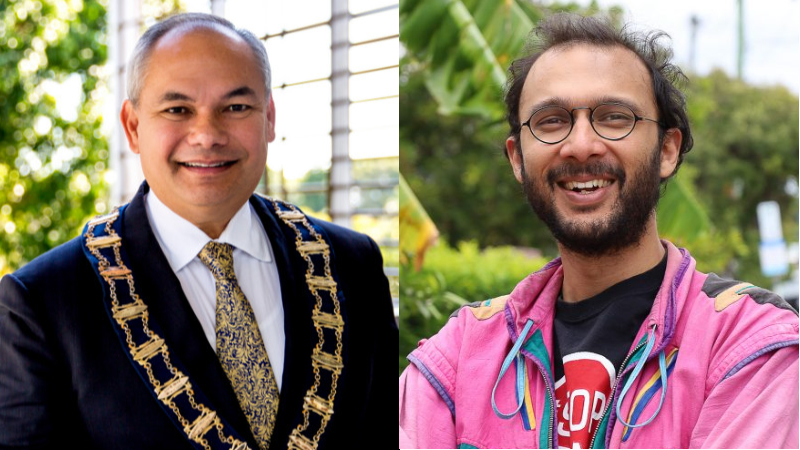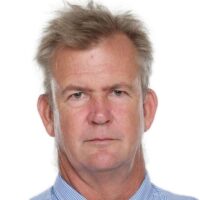The local elections in Queensland are on this Saturday. Paul Syvret with a rollicking run through the drama, the intrigue and the colourful characters.
In Queensland, if you hadn’t already noticed, we do things a bit differently. Local government elections are a case in point.
Unlike most states in Australia, Queensland has mega councils – both in terms of size and population. This became even more marked after the Beattie government pushed through a series of contentious council mergers in 2007, reducing the number of local governments in the state from 156 to just 72.
Brisbane alone, with a council budget of $4.3 billion, has more than 845,000 people registered to cast a vote in this Saturday’s state-wide local government elections. That is roughly the equivalent of the voting population of Tasmania, the ACT and the Northern Territory combined.
Even the City of the Gold Coast – the second largest council in Australia after Brisbane – has an enrolment on par with all of Tasmania.
These councils are not the small urban boroughs of other Australian cities (even the Sydney council has less than 100,000 registered voters). They are big business, big infrastructure, and, in many cases, a finishing school for political aspirants with ambitions in the state or federal spheres. One recent example was the unorthodox elevation of former Brisbane Lord Mayor Campbell Newman to Premier of Queensland.
And being Queensland, there is no shortage of drama, intrigue and colourful character actors.
Tom Tate – the spiritual deal maker
At the more flamboyant end of the spectrum is Gold Coast Mayor Tom Tate, who is running for his fourth four-year term. Tate, whose pre-politics career was (surprise, surprise) construction, tourism and property development, describes himself as a bit “rough around the edges”. His critics, less charitably, might argue Tate would be perfectly at home in the 1980 Joh Bjelke-Petersen era of cranes on the skyline, no-fuss development approvals and “don’t you worry about that” Queensland, complete with white shoes.
This is the man who has been dogged by investigations by the state Crime and Corruption Commission (but never prosecuted), findings of impropriety and allegations of conflicts of interest. The latter is exemplified by the ongoing controversy over the sale (to a company he part-owned) of the old Surfers Paradise Bowls Club and the mooted redevelopment of the site into a 52-story apartment tower. The site remains vacant. There are no lawn bowls and no apartment blocks.
This is the Mayor who, when Victoria dumped the 2026 Commonwealth Games, decided, in something of a brain-fart moment, that the Gold Coast (which hosted the Games in 2018) should do it again despite both the state and federal governments rolling their eyes and saying no.
This is also the born-again Christian and life LNP member (elected as an “independent”) who appointed his “spiritual advisor”—former Family First Senate candidate and advocate of the Seven Mountains evangelical mandate Sue Baynes—to a paid role in Council. Ms Baynes made national headlines by claiming the Gold Coast’s much-lauded Home of the Arts precinct is a gateway for demonic forces.

Home of the Arts. Image: HOTA
Apparently, the HOTA precinct was the original gateway to Surfers Paradise, and therefore it was a place of ‘control’
“Those of you who know about spiritual warfare understand about gateways,” Ms Baynes said. “I knew from that moment the enemy had a stronghold on that land and had been controlling the traffic flow, if you like, in the spirit to and forwards from Surfers Paradise, and that’s where it was sitting.”
If she and Mayor Tate are looking for demonic gateways, they might be better advised to tour the nightclubs and strip bars of Orchid Avenue in the early hours of Saturday morning than a family-friendly art gallery, cinema, and market precinct, but we digress.
The other contenders
Tate is up against eight mayoral contenders, with the likely main rival being real estate agent Eddy Sarroff (this is the Gold Coast, after all). Sarroff is campaigning on more community accountability. Good luck with that.
In a city with massive population growth and one that has long been a honeypot for developers (think Christopher Skase, Jim Raptis, Keith Williams and John Longhurst), growing pains are an issue.
This means green space, transport infrastructure (such as the continuing extension of the Coast’s light rail system so hotly contested by NIMBYs in wealthy Palm Beach and Burleigh), planning approvals, and affordable housing are front of mind in a city that has long been considered cowboy country where rules are made to be bent.
Brisbane and Jon Sri
At the other end of the political colour spectrum, we need to travel an hour up the M1 (or take a cut lunch and cancel all appointments if there’s been a prang) to Brisbane, where former Greens councillor for the inner city ward of the Gabba, Jonathan Sriranganathan (Jon Sri), is running as Mayoral candidate for the Greens.
To describe Sri as colourful is almost a tautology. His dress sense is a kaleidoscope of hues. He lives on a houseboat, advocates for squatters, plays in a couple of bands, has been arrested at protests, and is totally unafraid to speak his mind.
A Jon Sri press conference is never going to be a rote list of carefully sanitised talking points.
In Australia’s third largest city by population, Sri is potentially a wild card in what has long been a Liberal National Party dominated council. As it stands, the Greens have one ward at a local level, two seats in state parliament and three Brisbane federal MPs.
He’s up against LNP Lord Mayor Adrian Schrinner, an affable and fairly socially progressive small ‘l’ Liberal who took over from the LNP’s Graham Quirk – a man best painted in shades of beige and baking concrete (think the King George Square redevelopment) than anything colourful. Before Quirk, we had Campbell Newman, who before his ideological zealotry took hold as Premier – and saw him suffer the single largest electoral turnaround in Australian history when Annastacia Palaszczuk routed him after just one term – was well regarded as a competent manager and administrator who delivered services and infrastructure, and left the culture wars alone.
In the Labor corner is Tracey Price, a lawyer and small business owner, who is expected to struggle against Schrinner, who presides over a council chamber of 19 members, of which just five are from the Labor Party.
Who’s (on) second?
In many respects, the race for Brisbane is possibly a contest for second place, with the Greens hopeful. In a city straining under high interstate migration and with increasingly progressive politics in inner urban areas – hopeful of garnering enough support to emerge with as many councillors as the ALP.
The prize of Brisbane is no small beer. Bear in mind that until we know the outcome of the Tasmanian state election later this month, Mayor Schrinner is the highest-ranking leader of a Liberal (LNP in Queensland) government anywhere in the country.
For southeast Queensland, which is tying itself in increasingly convoluted knots over funding, planning, and building the billions of dollars of infrastructure for the 2032 Olympic Games, these two councils are key to shaping the state for the next decade.
It may get messy, but it will be entertaining.
Recovering former Murdoch columnist. Proud unionist, lover of cats, beaches, heavy metal, horror and Z grade films and cryptic crosswords.

